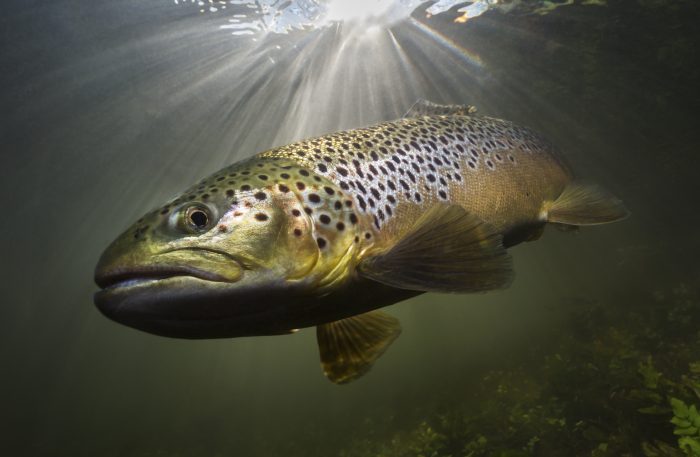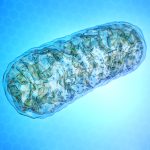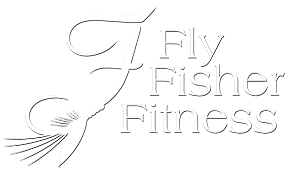Fly Fish More-Override Aging

To Fly fish More-Override Aging! Nature has programmed our body to age. It is innate, slow and steady but the signals are soft and easily overridden. Your DNA is still connected to Nature. It’s “listening” for signals from the environment to grow or decline. Everything you do, your choices and lifestyle send coded messages to your brain and body.
We discussed the biology of aging in a previous post. This includes a short synopsis.
Your body picks up these coded signals and responds accordingly. Daily expression of your DNA is dependent on signals from you.
In primitive times the signal to grow came from chasing down food—hunting and foraging. Today exercise replaces hunting and gathering. We live in a modern environment but the human body is unchanged. Our bodies crave the “growth message” and subsequent growing stronger, faster and smarter each day. That’s what we did thousands of years ago. Exercise tells your body, things are good, it’s springtime. Time to sharpen your skills, get lean, powerful and efficient.
When our ancestors returned after a day of hunting and foraging empty handed, their body was flooded with signals of desire, optimism, energy, curiosity and creativity. Chemical juices of grow faster, stronger and sharper flooded their muscles, veins, arteries, joints, bones and organs. They were alert and fully engaged, on the path to get better at hunting and foraging each day.
Nature dictates. The human body gears itself to optimal performance by way of signals from the environment.
Fly fish More-Override Aging…….Exercise!
Exercise triggers the signal for growth. The part of your brain that controls exercise is the hindbrain or brainstem. It has been called the lizard brain and reptilian brain. We’ll call it the hindbrain and it sits at the top of your spinal cord. It is a miraculous work of unchanged evolutionary precision. It communicates at the cellular level, not through conscious thought or speech but primitive biology, cellular pathways.
When you exercise, your muscles send complex and multi-system signals that gear your cells, organs and tissues to the immediate energy demands of the moment. Chemical impulses, and messenger proteins signal growth hormone, insulin, testosterone, serotonin, adrenalin and dozens of others to join the dance. You initiate this cellular growth pathway when you exercise. Think about when you climb stairs. Your steps automatically engage the hindbrain and thus, your heart rate increases. Your muscles’ demand for blood flow and oxygen is met with a perfected response from the hindbrain. The hindbrain continues to monitor your body’s metabolism, movement and needs (communicating with other parts of the brain) in perfect harmony.
Researchers tout exercise because it stresses your muscles in a good way and muscles are more than what meets the eye. They are the great controllers of growth. With consistent signals—from your daily activities, growth overrides the innate message of decline. You put the pathway of growth in action through exercise. Muscle is the great agent that sends growth signals–chemicals, hormones, and proteins into your bloodstream. Then every organ, joint, bone, and even your brain is marinating in the juices of growth. This is no small thing. You have 660 muscles, about 75 to 100 pounds of growth potential at your control. There is no reason, absolutely zero need to accept deterioration and decay as a part of getting older.
Growth and Repair
I hope you can see that the circulatory system is the critical infrastructure of growth and repair. The good stress of exercise causes the micro-breakdown of muscle cells which releases messenger proteins called cytokines into your bloodstream. Aerobic exercise triggers maximum creation of new mitochondria—small organelles in the cell. They are tiny energy packets that improve our ability to burn glucose (blood sugar) and fat. More mitochondria equal more energy.
Use this contact form to get in touch.

A single mitochondrion
Your muscles feel hard after exercising because they are packed with new mitochondria, new capillaries (grow with consistent, over months aerobic training) and glucose.
After exercise when you feel sore from that micro-breakdown of muscle cells, a different set of messenger cytokines act to initiate the pathways of repair and rebuild and not just for muscles. Your veins, arteries, joints, bones, organs and brain, everything enjoys bathing in the repair and rebuild juices for several hours after exercising.
Exercise every day. It is much more potent than the gravitational pull of aging. It will even help you keep a chronic illness in check. To quote Dr. Linda Fried, dean of Columbia University’s School of Public Health, “Exercise is the closest thing we’ve found to a magic pill for combating the effects of aging. That’s because it works on every physiological system and keeps your body fine-tuned.”
Two Types of Muscle
A daily effort toward the core elements of fitness is most effective: endurance, strength, flexibility, balance. The top two critical elements are strength (type II muscle) and endurance (type I muscle). Balance and flexibility build upon these two foundational functions.
Endurance training involves type I muscles and includes running, walking, hiking, cross-country skiing and rucking. You want to perform these at a moderate pace, about 60-70 % of your peak heart rate. Where you can talk in short bursts but a conversation is uncomfortable. Think long and slow here. You are developing stamina, a strong heart and lung capacity (V02), increased blood flow and high cardiovascular strength.
Resistance training involves type II muscles. Weight training, push-ups, squats, deadlift, leg presses; using body weight machines or free weights. You develop power and coordination and strengthen the musculoskeletal system with the nervous system.
From a solid foundation of muscle strength and aerobic capacity work to develop and increase balance and flexibility. Weight training will strengthen your joints too. But also, make special effort on the finer points, smaller muscles that facilitate a stable frame and good workouts—strengthening hip, knee and ankle joints. Many of the pains we endure are from over-used and under-developed joints. Calf raises, lunges, step downs and step ups work to fortify areas normally overlooked but often injured.
Fly Fish More-Override Aging: Do You Need to be Comfortable All the Time?
Exercising to Fly fish More-Override Aging requires a lot of work. You will be uncomfortable. But there is no other “treatment” that does as much to preserve function and prevent deterioration. Even if you have a chronic condition already, exercise can keep it from progressing to the point of debilitation.
Develop yourself while protecting yourself. Always exercise cautiously. Don’t take risks. The idea is steady, continuous workouts over months and years, with a long-term emphasis to stay in the game. Injuries are setbacks to be avoided at all costs. Pain from a good workout is reassuring. Any other kind of pain is unacceptable.
Double caution: Always consult a medical professional to ensure it’s safe to push yourself (even a little) to exercise. Better still, ask your doctor to give you a treadmill stress test. The results and subsequent discussion with your doctor will put you at ease. That comfort will allow you to give 100% to your new growth lifestyle.
Lastly, if you push out of the marshmallow soft comfort of modernism, it will change you in a positive way on multiple levels. You will become a better person!!!
Download my free e-book, Quick Guide to Strength, Stamina and Sturdiness.
Tags: Comfortable, exercise, Growth, Muscle, Nature, Override aging, Repair, Virtual Fitness Program
Categorized in: General Knowledge
